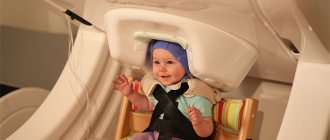In neurology, there are many forms of epileptoid disorders, and their classification is very complex (according to etiology, age of manifestation of clinical symptoms, type of seizures, etc.). At the same time, many experts note that, along with neurological disorders, such an illness is also accompanied by psycho-emotional disorders. Many publications are devoted to personality changes in patients with this diagnosis, and in some patients (approximately 3-5% of cases) such symptoms progress to mental epilepsy (or epileptic psychoses), which requires the intervention of not only a neurologist, but also a psychiatrist. In their many years of practice, medical doctors have encountered this kind of disorders more than once, and therefore have experience in successfully treating such disorders.
Etiological factors
The causes of mental epilepsy are:
- genetically determined predisposition;
- congenital malformations of the central nervous system due to intrauterine infection, intoxication, hypoxia, etc.;
- trauma, neuroinfections in the perinatal period or early childhood;
- traumatic brain injuries;
- acute and chronic disorders of cerebral blood flow;
- metabolic disorders, etc.
According to experts, the risk of such an illness is much higher if, with an already diagnosed epilepsy, the patient does not follow the doctor’s recommendations regarding diet, treatment, avoidance of alcohol, psychostimulants, etc.
Mental health
A characteristic feature of mental changes in epilepsy is the polarity of affect, on the one hand, expressed in affective viscosity, stuck on especially negatively colored events and emotional experiences, and affective explosiveness, impulsiveness with a large force of affective discharge, on the other.
Typical features of patients with epilepsy are egocentrism, neatness, reaching the point of pedantry, excessive desire for order, hypochondriasis and a combination of rudeness, aggressiveness with flattery and obsequiousness towards elders and persons on whom patients are dependent. This combination is evidenced by the old figurative expression: “With a prayer on your lips and a stone in your bosom.”
Children experience pathological changes in the deep layers of the psyche: instincts and drives (instinct of self-preservation, increased drives, which is associated with cruelty, aggressiveness and increased sexuality), as well as a slow pace of mental processes and a gloomy, gloomy mood.
Violations of intellectual-mnestic functions are manifested in slowness, rigidity of thinking, a tendency to detail and memory loss.
These changes are more often observed in adults and older adolescents; in childhood they are erased. Affective bipolarity is observed more consistently in school-aged children.
In children of preschool and primary school age, the disorders are atypical; motor disinhibition, increased affective excitability, and instability of affect are observed. There is a contrast in psychomotor skills, a combination of slowness, heaviness, poor switchability of movements with impulsiveness, a tendency to violent motor discharges. Inertia of motor skills also manifests itself in speech disorders: blurred speech, unclear articulation, monotony of voice.
In a number of cases, in preschool age, typical “epileptic personality traits” are discovered, such as affective viscosity, resentment, vindictiveness, egocentrism, excessive selfishness, greed, neatness, the desire to restore order, and complain about other children. It is believed that the most pronounced personality changes are observed in temporal lobe epilepsy.
Due to the fact that epilepsy in children often develops against the background of early organic brain damage, personality changes also include manifestations of psychoorganic syndrome: cerebrasthenic disorders, exhaustion, attention disorders, headaches, poor memory, uncriticality, euphoria, psychopathic behavior. Pronounced features of infantilism are revealed.
V.M. Morozov in 1967 defined epileptic dementia as viscous-apathetic, in which, along with the rigidity of mental processes, lethargy, passivity, indifference to the environment, dull reconciliation with the disease are observed, the thinking in these patients is viscous, concretely descriptive, and is lost ability to highlight the main thing, the patient gets stuck in a conversation on trifles. Memory decreases, vocabulary becomes poorer (oligophasia). Affective tension becomes less pronounced, but the traits of flattery and obsequiousness remain.
Diagnosis of epilepsy
In the diagnosis of epilepsy, three main signs are of decisive importance: paroxysmal disorders prone to recurrence, typical epileptoid personality changes, progression of disorders, expressed in changes, frequency and expansion of paroxysms and an increase in epileptoid character traits with an increase in signs of epileptic (concentric) dementia in the unfavorable course of the disease . An additional sign is epileptic activity detected by EEG. For the early diagnosis of epilepsy, it is of great importance to carefully question the parents about the child’s behavior, the presence of sleep disorders, sudden awakenings with fears, sleepwalking and sleep talking, sudden freezing, shuddering, as well as a thorough analysis of somatovegetative disorders: headaches, dizziness, sudden abdominal pain, nausea, bouts of paleness, unusual paroxysmal movements such as blinking, swallowing, shaking fingers, etc.
In young children, due to a low threshold of convulsive activity, nonspecific convulsive reactions (epileptic reactions) easily occur. Most often they occur at high temperatures during general infections and are called febrile seizures. Febrile seizures always occur with a rapid rise in temperature, and the seizure is generalized, symmetrical in nature, and is not accompanied by stupor and sleep.
In epilepsy, the first seizure can occur at low-grade fever, the seizure itself is often abortive, with a focal component, followed by stupor and sometimes sleep.
The occurrence of convulsions and spastic manifestations in spasmophilia is caused by increased excitability of the nervous system due to an imbalance in ionic balance due to hypocalcemia, hyperphosphatemia and alkalosis.
With spasmophilia, laryngospasm and spasm of the pharyngeal muscles are observed, which occur during excitement and fear. The child develops noisy breathing, breathing may stop for a few seconds, and the child turns pale and then becomes cyanotic. With prolonged spasm, loss of consciousness and clonic convulsions are possible. Attacks of spasmophilia are more often observed in the spring months.
Affective-respiratory attacks are an expression of dissatisfaction when the child’s wishes are not satisfied and are therefore considered psychogenic. If it is impossible to get what he wants, the child begins to cry. Intermittent deep breathing stops on inhalation, pallor and cyanosis appear, the child “goes limp,” and tonic muscle tension occurs. With prolonged affective-respiratory attacks, impaired consciousness, short-term clonic convulsions and involuntary urination are possible. These attacks are observed in excitable, irritable, capricious children.
An epileptic seizure should be distinguished from a hysterical one. It is necessary to take into account the imitative abilities of patients with hysterical disorders; if a patient with hysteria has had to repeatedly observe an epileptic seizure in his life, then he can reproduce the sequence of disorders. In these cases, a thorough history taking, identification of psychogenic situations preceding a seizure, and an EEG study are necessary.
A girl with epileptic seizures was admitted to a neurological clinic. The doctors noticed that her seizures occurred during medical rounds and were not accompanied by tongue biting, urination, stupor and drowsiness; during the seizure it was not possible to see the reaction of the pupils, as she closed her eyes. When collecting anamnesis, it turned out that the seizures arose after an unsuccessful attempt to enter a university, and the patient’s father suffered from traumatic epilepsy and she repeatedly observed seizures.
Epilepsy must be differentiated from epileptiform syndrome in organic diseases of the brain. The time of onset of epileptiform seizures matters. If they occur in the acute period of traumatic brain injury or infectious disease, then the diagnosis is always decided in favor of epileptiform syndrome. It is more difficult to differentiate whether attacks in the long-term period belong to organic diseases. The presence of psychoorganic disorders during the interictal period and the absence of typical epileptic personality changes testifies in favor of epileptiform syndrome. To clarify the diagnosis, the results of laboratory and electrophysiological studies are important, in which changes in bioelectrical activity typical of epilepsy are detected: sharp waves, spikes, a combination of spike-wave and slow wave, most clearly revealed during hyperventilation and photostimulation.
Acute psychoses in epilepsy are manifested by twilight states, delirious and oneiric changes in consciousness.
Oneiric states are often accompanied by religious experiences and a kind of exaltation. Next »
Clinical picture
Depending on the time of occurrence (in relation to seizures), attacks of mental epilepsy can be:
- Interictal : occur many hours or even days after an epileptic seizure against the background of clear consciousness. They are characterized by a tendency to protracted and sometimes chronic course.
- Postictal symptoms develop immediately after convulsions and represent hallucinosis of varying content, delusions with episodes of auto-aggression or violence towards others.
- Periictal , preceding an epileptic seizure, can persist during the seizure and pass into postictal.
According to the clinical picture, the following types of mental disorders in epilepsy are distinguished:
- psychosis in the form of hallucinosis;
- delusional disorder;
- acute paranoid;
- hallucinatory-paranoid psychosis;
- paraphrenic psychosis;
- depressive psychotic disorder;
- mania;
- catatonic psychotic disorders;
- Oneiroid.
Chronic mental changes in epilepsy
Prepared by: MedWeb
An important group of mental disorders noted in epilepsy are chronic changes in the psyche, which are extremely typical for this disease. Depending on the nature and extent of the painful process itself, these mental changes can appear more or less sharply.
epilepsy, psychiatrist
On the affective-volitional side, epileptics often experience irritability, excitability, and a tendency to outbursts of anger over the most insignificant reasons . In more severe cases, malice, rancor, vindictiveness, and a tendency to aggression and violence are revealed. Some epileptics are slow, painstaking, and meticulously pedantic. Sometimes epileptics develop an elevated opinion of themselves, of their honesty, justice, love of truth, which stands in sharp contradiction with their extreme selfishness, exaggerated concern for themselves and personal well-being, usually to the detriment of the interests of others. On the other hand, along with increased self-esteem, egocentrism and aggressive tendencies, epileptics are often characterized by flattery, sweetness, and obsequiousness.
In the intellectual sphere, slowness, viscosity, rigidity of thinking , the difficulty of moving from one thought to another, the inability to separate the essential from the secondary, the main thing from the little things, come to the fore. Hence the special thoroughness of thinking with a tendency to get stuck on trifles, to go into unnecessary details, which creates a special viscous, detailed thinking characteristic of epileptics.
In accordance with the peculiarities of thinking, the speech of epileptics is characterized by extreme thoroughness, unproductivity and is replete with stereotyped, mostly florid and pompous phrases , with a frequent tendency to use diminutives and terms of endearment.
Memory and understanding gradually weaken . The circle of interests is narrowing. General intellectual limitations are increasingly increasing. With a high degree of intellectual decline, we can talk about “ epileptic dementia ” (dementia).
Changes of both orders usually occur side by side, not always, however, to the same extent: sometimes characterological changes come to the fore, sometimes intellectual decline predominates.
It must be emphasized that these mental characteristics are not characteristic of all epileptics. There are epileptics with varying degrees of character change, as well as with varying depths of degradation. In cases where mental changes are sharply expressed, patients become dull, apathetic, and helpless. With mildly expressed changes in the psyche, the behavior of patients is more or less correct, they can work, and thanks to their thoroughness and pedantic accuracy, their inherent slowness and insufficient considerations are concealed and partly compensated.
Hallucinosis
They note pronounced, realistic visual and verbal illusions. This can be calls by name, noise of voices, individual exclamations, phrases and even sentences. Sometimes the patient enters into a kind of dialogue with an imaginary interlocutor. Olfactory and tactile hallucinations are much less common. Unlike psychosis, with various mental illnesses or mental disorders of alcohol origin, a person usually remains in a clear consciousness, but in some cases (especially against the background of repeated hallucinosis) he begins to doubt the reality of what is happening.
Delusional disorder
Schizophrenia-like symptoms are typical; in isolated cases, hallucinations are possible. A persistent delusion is formed with elements of jealousy, persecution mania, damage, and hypochondria. Usually its content directly depends on the characteristics of the patient’s personality. Thus, with excessive suspiciousness, paranoid ideas predominate, anxiety - obsessive thoughts that someone wants to harm health or property, egocentrism - the conviction that the spouse is cheating, wants to get a divorce, etc.
Hallucinatory-paranoid psychosis
Characterized by the formation of logically constructed delusional ideas of greatness or persecution . They are accompanied by hallucinations corresponding in content (auditory or visual). Illusions often have a predominant religious theme and are frightening and frightening in nature.
With prolonged excesses of mental epilepsy, hallucinatory somatic sensations are “joined” with illusions. Periodically, the patient feels as if there is a foreign object (hair, needles, insects, etc.) on his face or throat, and he tries to remove it. At the same time, anger and aggression appear. After the seizure is over, the person remembers everything that happened to him.
Diagnosis and treatment of epilepsy: opportunities and difficulties
O.V. GLOBA , Candidate of Medical Sciences, Senior Researcher, L.M. KUZENKOVA , Doctor of Medical Sciences, Professor, A.A. BARANOV , Academician of the Russian Academy of Medical Sciences, Doctor of Medical Sciences , Professor, Scientific Center for Children's Education of the Russian Academy of Medical Sciences, Moscow
Paroxysmal conditions, having both an epileptic and non-epileptic nature, are very common in childhood. However, in some cases it can be difficult to differentiate them, since some types of paroxysms have a similar clinical picture. This causes the following problems: delayed prescription of anticonvulsant therapy for epilepsy, which worsens the prognosis of the disease, or unjustified prescription of anticonvulsants to children with paroxysmal conditions of a non-epileptic nature.
Therefore, any paroxysmal disorder requires a comprehensive examination and dynamic monitoring of patients to decide on the prescription of therapy. Sometimes epilepsy is disguised under other diagnoses: “episyndrome”, “convulsive syndrome” or “convulsive readiness”. Such patients, even receiving anticonvulsants for a long time, are confident that they do not have epilepsy. Very often this leads to the choice of inadequate therapeutic tactics.
Epilepsy is one of the most common manifestations of nervous system pathology. This disease has been known to mankind since ancient times. Mention of it is found both in ancient Greek myths and in the Bible. In ancient times, external manifestations of epilepsy caused sacred horror among eyewitnesses. Sometimes people with epilepsy were considered saints, but more often they were associated with otherworldly dark forces. Echoes of these ideas are still alive in our time, so not every person can admit that they have epilepsy. Among children under 15 years of age, epilepsy occurs in 5-10 cases out of 1000, and in some regions it reaches 1% [1, 2]. In approximately 75% of cases, the onset of epilepsy occurs in childhood.
Epilepsy in childhood is characterized by a large number of treatment-resistant forms and polymorphism of seizures
For many decades, epilepsy was considered a single disease, but currently the concept of it has changed significantly. Now epilepsy is considered as a group of diseases that have their own electroclinical characteristics, approaches to therapy and differing prognoses.
Epilepsy (from the Latin epilepsia - grasping) is a heterogeneous group of chronic diseases characterized by recurring episodes of uncontrolled excitation of brain neurons from time to time, which is manifested by repeated unprovoked (with the exception of reflex forms of epilepsy) attacks of disturbances in motor, sensory, autonomic, mental or mental functions. Those. epilepsy is characterized by repeated convulsive or non-convulsive seizures, caused by partial or generalized epileptic discharges of the brain.
The diagnosis of epilepsy is made only if the child has had 2 or more epileptic seizures that occurred without clear provoking factors.
The manifestations of epilepsy are varied, which made it difficult to accept a single classification. The development of electroencephalography methods and their introduction into widespread clinical practice made it possible to compare electrophysiological and clinical signs of epileptic paroxysms. Based on this, in 1981 in Kyoto, the International League Against Epilepsy developed the International Classification of Epileptic Seizures. The classification was based on a principle that takes into account the degree of involvement of the cerebral hemispheres in the development of paroxysm. There are partial (focal, localization-related) and generalized seizures.
In generalized attacks, initial clinical and electroencephalographic manifestations indicate involvement of both hemispheres of the brain in the pathological process. In most cases, they are characterized by loss of consciousness. In partial seizures, the initial clinical and electrophysiological manifestations indicate the involvement of one or more areas of one hemisphere of the brain in the pathological process. There are simple partial seizures, which occur with preserved consciousness, and complex partial seizures, characterized by its disturbance.
During partial attacks, various motor phenomena, sensory (tingling sensation, short-term tinnitus, sensation of smell, taste, short-term loss of vision, flashes of light, etc.) and autonomic reactions can be observed. Over time, as knowledge about these conditions accumulated, it became clear that epilepsies represent a heterogeneous group of epileptic syndromes that differ from each other in etiology, seizure pattern, course and prognosis (Dreifuss, 1994). The same type of seizure may occur in different epilepsies, and some epilepsies may involve more than one type of seizure. In this regard, in 1989 it was developed
International classification of epilepsies and epileptic syndromes, which was based on the etiology, age of onset and nature of paroxysms, that is, the syndromic principle. All epilepsies were divided into idiopathic, symptomatic, cryptogenic and situationally determined: - In idiopathic epilepsies, neuroimaging in most cases does not reveal structural damage to the brain; genes have been mapped for many diseases. — Symptomatic epilepsy is characterized by the occurrence of paroxysms against the background of anatomical damage or known biochemical disorders (for example, epilepsy against the background of brain abnormalities, hereditary metabolic diseases (phenylketonuria, homocystinuria), post-stroke, post-traumatic). — In cryptogenic epilepsies, it is not possible to identify a clear focus during neuroimaging, but the nature of the attacks, the age of onset, and the development of the disease do not allow this condition to be attributed to any of the idiopathic epilepsies. — Situation-related seizures are pathological reactions of a generally normal brain to physiological stress or transient epileptogenic stress. Such conditions include, for example, febrile convulsions that occur during fever and are not a manifestation of neuroinfection.
There are a significant number of factors contributing to the occurrence of epilepsy - hereditary, multifactorial (a combination of hereditary and acquired factors), as well as brain damage in symptomatic forms of epilepsy due to: - hypoxic-ischemic brain damage; — congenital developmental anomalies; - intrauterine infections; — chromosomal syndromes; - hereditary metabolic diseases (aminoacidopathy, organic acid metabolism disorders, pyridoxine-dependent seizures); - birth damage to the central nervous system; - infections of the nervous system; - traumatic brain injury; - tumors; - intracerebral hemorrhages; — withdrawal syndrome; - metabolic disorders (transient, prolonged hypoglycemia, associated with congenital metabolic disorders, hypocalcemia, accompanied by DiGeorge syndrome, hypomagnesemia, bilirubin intoxication).
The diagnosis of epilepsy is clinical and electroneuroimaging [3]. In this regard, to make a diagnosis, it is necessary to have not only a clinical description of the attacks, but also electroencephalographic confirmation using routine EEG recording, EEG video monitoring, and, if necessary, long-term EEG video monitoring; neuroimaging methods (CT, MRI, high-resolution MRI, possibly with SPECT, functional MRI); molecular genetic research methods; differential diagnosis with hereditary metabolic diseases for the implementation of etiotropic therapy, if possible. Epilepsy, especially with resistant seizures, is a common manifestation of certain chromosomal diseases and hereditary metabolic diseases. Since the creation of the last classification, a large number of new epileptic syndromes have been described and some provisions of the classification have been revised.
In this regard, in 2001, the International Commission on Classification and Terminology released a draft new classification of epileptic seizures and epileptic syndromes [4]. It presents childhood epileptic encephalopathies: severe behavioral, cognitive or motor disturbances that occur in children due to frequent epileptic seizures and/or prolonged, usually diffuse, interictal epileptiform discharges on the EEG (Guerrini, et al., 2002), as well as reflex seizures and reflex epilepsy. However, the classification continues to improve.
In childhood, the adverse effect of epileptic seizures on the cognitive functions of the brain and the direct damaging effect on nervous tissue are manifested: there is a direct relationship between the severity and distribution of changes in nerve cells and the severity of the attacks; Particularly severe consequences occur in the brain during polymorphic convulsive seizures and partial seizures with secondary generalization
Recently, paroxysmal states of epileptic origin have been actively studied. The introduction into practice of high-tech methods of examination and studying the pathogenesis of paroxysmal disorders allows expanding the diagnostic and therapeutic capabilities of controlling these conditions (Dulak O., Chiron K., 2006; Karlov V.A., 2002; Mukhin K.Yu. et al., 2004 ).
Timely establishment of the correct diagnosis—a specific form of epilepsy—is of fundamental importance, since the treatment strategy and prognosis of the course of the disease depend on it. The diagnosis must be made by an epileptologist.
When treating epilepsy, it is necessary to achieve complete relief of epileptic seizures, as well as prevent their development with minimal side effects of anticonvulsant therapy. If this goal cannot be achieved, it is necessary to reduce the frequency of attacks and/or the severity of clinical manifestations as much as possible, and also ensure that the patient is correctly diagnosed.
To treat epilepsy, antiepileptic drugs are used that can stop and prevent the development of seizures.
The presence of repeated, stereotypical, spontaneously occurring seizures is the main condition for prescribing anticonvulsant therapy.
The main principles of treatment are: - compliance of the drug with the type of seizures and form of epilepsy; - monotherapy, i.e. use of one drug. If ineffective, switch to monotherapy with a second-line drug, and only after that the use of two or more drugs; — sufficient therapeutic dosage with control of the concentration of the anticonvulsant in the blood; — starting therapy with a minimum dose of an anticonvulsant drug and agreeing on all changes in therapy with the attending physician; — regularity; — duration (at least 3 years); - individual approach.
It must be remembered that inconsistency of the drug with the nature of the attacks or syndrome can lead to an increase in paroxysms and a deterioration in the child’s condition.
Epilepsy is a disease that requires long-term treatment (at least 3 years after the cessation of attacks). With properly selected therapy, it is possible to achieve adequate control of attacks in 70% of patients. Due to the presence of epileptic syndromes in childhood that are difficult to treat, the use of anticonvulsants in children has its own characteristics.
Epilepsy is a disease that requires long-term treatment (at least 3 years after the cessation of attacks). With properly selected therapy, it is possible to achieve adequate control of attacks in 70% of patients
Having chosen a drug, it is necessary to develop an optimal dosage regimen, which is determined by the pharmacokinetics of the drug, its toxicity and release form. The administration of liquid forms (solutions, suspensions) and suppositories allows you to quickly achieve the required concentration of the drug in the blood plasma, but requires multiple doses during the day. The use of prolonged-release drugs or so-called controlled-release drugs (retarded forms) is one of the rational and effective approaches, as it allows to smooth out peaks in plasma concentrations, reduce the risk of side effects and increase the effectiveness of treatment.
The anticonvulsants used differ in their mechanism of action, pharmacokinetics, and effect on the types of seizures and epileptic syndromes.
Let's consider the main drugs used in pediatric practice for the treatment of epilepsy.
Valproic acid and its derivatives: sodium valproate, calcium valproate, magnesium valproate
The mechanism of action of valproates is multifaceted and includes an effect on various parts of the pathogenesis of epilepsy, and is also associated with increased GABAergic inhibition, a decrease in paroxysmal neuronal discharges (blockade of T-type sodium and calcium channels), inhibition of GABA aminotransferase, as well as a decrease in GABA reuptake in the brain . Indications. Valproate is highly effective for all types of epilepsy and epileptic seizures. They are used to treat all forms of epilepsy and epileptic seizures (generalized, partial, and difficult to differentiate seizures), as well as specific syndromes (West, Lennox-Gastaut) and bipolar affective disorder. Valproate is used from the age of 6 months. Iminostilbenes
Carbamazepine
It has antiepileptic, analgesic, antidepressant and normothymic effects. The antiepileptic effect is mainly due to the effect on voltage-dependent sodium channels. The mechanism of action is due to the blockade of voltage-gated fast sodium channels, which leads to stabilization of the neuronal membrane, inhibition of the occurrence of serial neuronal discharges and a decrease in synaptic conduction of impulses. Carbamazepine reduces the release of the excitatory neurotransmitter amino acid glutamate, increases the reduced seizure threshold, increases conductivity for K+, modulates voltage-gated calcium channels, thereby reducing the risk of developing an epileptic seizure. The drug also corrects epileptic personality changes and, ultimately, increases the sociability of patients and promotes their social rehabilitation.
Indications. Carbamazepine is used to treat focal seizures with or without secondary generalization and primary generalized tonic-clonic (but not other generalized) seizures.
Oxcarbazepine
Structurally and in terms of the mechanism of action, it is close to carbamazepine, retains all its positive qualities, but, thanks to changes in the chemical formula, it has a number of additional advantages, mainly due to a significant reduction in side effects and a partially different spectrum of effectiveness. The drug stabilizes pre- and postsynaptic membranes by blocking sodium channels, blocks aspartate-activated transmembrane currents of sodium and calcium, calcium channels, inhibits serial discharges of neurons and reduces synaptic conduction.
Indications. Oxcarbazepine is used to treat simple focal, focal with impaired consciousness, secondary generalized, and primary generalized tonic-clonic seizures. In most cases, the drug is effective in monotherapy of focal seizures (60–85%), which corresponds to the “gold standard” for the treatment of epilepsy. If necessary, it is combined with other drugs of first and second choice - sodium valproate, lamotrigine, levetiracetam, showing good pharmacodynamic properties.
The administration of oxcarbazepine is ineffective and is not recommended for absence seizures, myoclonic, atonic-astatic seizures, childhood epilepsy with centrotemporal seizures (Rolandic epilepsy), Landau-Kleffner epileptic aphasia due to a possible increase in seizure frequency.
Benzodiazepines
Clonazepam
It is a 1,4-benzodiazepine and a chlorinated derivative of nitrazepam. The mechanism of action is associated with increased GABAergic inhibition at the level of GABA (subtype A) receptors. Indications. Clonazepam is used for initial or additional therapy for atypical absences, atonic, myoclonic seizures. However, as a rule, it is not a drug of choice due to side effects and possible addiction. The drug has antiepileptic, anxiolytic, muscle relaxant and hypnotic effects. Clonazepam can be used from the neonatal period.
Hydantoins
Phenytoin
The mechanism of action of phenytoin is associated with a decrease in paroxysmal discharges of neurons (blockade of sodium channels).
Indications. Phenytoin is used to treat all forms of seizures (tonic-clonic, partial and neonatal seizures), with the exception of absence seizures. In newborns, it may increase myoclonus. The drug is relatively effective, but is not the first choice due to fairly pronounced side effects and nonlinear pharmacokinetics. It is used to relieve status epilepticus and prevent epileptic paroxysms after traumatic brain injury and neurosurgical operations. Phenytoin can be used from the neonatal period.
Barbiturates
Phenobarbital
The mechanism of action is due to the enhancement and/or imitation of the inhibitory effects of GABA, disruption of the permeability of cell membranes, and an increase in the threshold of electrical stimulation of the motor zone of the cerebral cortex.
Indications. Phenobarbital is used to treat all types of seizures except absence seizures; hyperbilirubinemia (including in newborns, with chronic intrahepatic cholestasis, congenital non-hemolytic unconjugated hyperbilirubinemia), neonatal seizures. The drug has antiepileptic, sedative, hypnotic and muscle relaxant effects. Phenobarbital can be used from the neonatal period, but is rarely used in widespread practice due to its negative impact on cognitive function.
Succinamides
Ethosuximide
The mechanism of action of ethosuximide is associated with inhibition of nerve transmission in the motor area of the cerebral cortex and blocking of T-type calcium channels in the thalamus.
Indications. Ethosuximide is used for typical and atypical absence seizures in idiopathic and cryptogenic forms of epilepsy. In monotherapy mode, it is used for the treatment of absence seizures in epilepsy in children without generalized epileptic seizures, in combination therapy (as an additional drug) - for the relief of absence seizures in children with generalized seizures, absence seizures in juvenile epilepsy, juvenile myoclonic epilepsy, myoclonic epilepsy with absence seizures, epilepsy with myoclonic absence seizures, epilepsy with myoclonic-astatic seizures. For Lennox-Gastaut syndrome, ethosuximide can be used from the neonatal period.
Other anticonvulsants
Lamotrigine
Has a wide spectrum of action. Effective for Lennox-Gastaut syndrome. It has a beneficial effect on cognitive functions, mood and behavior of patients. Lamotrigine is most appropriately prescribed for the treatment of pregnant women suffering from epilepsy. The antiepileptic effect of the drug is due to the fact that it is an antagonist of glutamate receptors and also affects voltage-dependent sodium channels.
Indications. Lamotrigine is used for monotherapy and adjunctive therapy of partial and generalized seizures (including simple and complex partial, secondary generalized, primary generalized and absence seizures). In pediatric practice, it is not recommended to carry out monotherapy with the drug as an initial treatment method in patients newly diagnosed. Lamotrigine is used from 2 years of age.
Vigabatrin
Irreversible selective inhibitor of GABA aminotransferase. Increases the content of the main inhibitory transmitter of the nervous system, GABA, in synapses, thereby increasing the inhibitory effects. Suppresses the increased excitability of neurons, which underlies the occurrence and spread of epileptic seizures.
Indications. The drug is indicated for partial seizures. Vigabatrin is most effective for the treatment of infantile spasms, especially in combination with tuberous sclerosis. Topiramate
A new anticonvulsant with a unique structure – a sulfamate-substituted monosaccharide. The antiepileptic effect is due to the effect on voltage-dependent sodium channels. Reduces the frequency of action potentials characteristic of a neuron in a state of persistent depolarization, which indicates the dependence of the blocking effect of topiramate on sodium channels on the state of the neuron, modulates GABA and glutamate receptors (AMPA) by inhibiting carbonic anhydrase isoenzymes.
Indications. Topiramate is used to treat adults and children with partial or generalized tonic-clonic seizures, either alone or in combination with other anticonvulsants, and as an adjunctive therapy for the relief of seizures associated with Lennox-Gastaut syndrome. Has a neuroprotective effect. The drug is used from 2 years of age. The disadvantages of the drug include the need for slow titration of the dose (for children - no faster than 1 mg per kg of body weight per week).
Levetiracetam
A new antiepileptic drug. It was synthesized in the process of researching and improving the properties of the nootropic piracetam (nootropil). The structural similarity to piracetam explains the difference in the spectrum of action of levetiracetam and other new anticonvulsants.
Levetiracetam is highly effective, including in pharmacoresistant epilepsy, is well tolerated, has a wide spectrum of action and a favorable pharmacokinetic profile: high bioavailability, low plasma protein binding (less than 10%), linear pharmacokinetics, lack of stimulation of microsomal liver enzymes, half-life of about 8 hours, and therefore it can be used twice a day (Arroyo S., 2002; Muralidharan A., 2006).
Affects various parts of the pathogenesis of epilepsy, including sodium and calcium channels, the GABAergic system. It has fundamentally new mechanisms of action. The drug has been proven to bind to the glycoprotein of synaptic vesicles SV2A, contained in the gray matter of the brain and spinal cord. It is believed that in this way an anticonvulsant effect is realized, which is expressed in counteracting the hypersynchronization of neural activity. In a study of brain changes during experimental occlusion of the middle cerebral artery, it was shown that levetiracetam reduces the volume of infarction by a third, which is due to its neuroprotection against the excitotoxic effect of activation of NMDA receptors in the ischemic zone (Hanon E., 2001).
Levetiracetam is highly effective in the treatment of epilepsy, has a wide spectrum of action and is characterized by an almost complete absence of serious side effects (Hovinga CA, 2001; Arroyo S., 2002). It does not interact with all known anticonvulsants, which eliminates changes in the concentration of the second drug and provides ample opportunities for combination therapy.
Indications. Levetiracetam is used for the treatment of partial seizures with or without secondary generalization in adults and adolescents over 16 years of age with newly diagnosed epilepsy as monotherapy (first choice).
As part of complex therapy, it is used in the treatment of the following conditions: - partial seizures with or without secondary generalization in adults and children over 4 years of age suffering from epilepsy; - myoclonic seizures in adults and adolescents over 12 years of age suffering from juvenile myoclonic epilepsy; - primary generalized convulsive (tonic-clonic) seizures in adults and adolescents over 12 years of age suffering from idiopathic generalized epilepsy.
As an additional therapy, it is prescribed to patients with partial seizures, both with and without secondary generalization. The drug can be used in children over 12 years of age. According to Mukhin K.Yu. et al., levetiracetam is effective in monotherapy of various types of epilepsy, but it can also be used for severe cognitive disorders associated with epileptic activity: Landau-Kleffner epileptic aphasia and epilepsy with constant complexes (spike-slow wave in slow-wave sleep). These syndromes occur between the ages of 2 and 10 years and, if diagnosed untimely or improperly treated, lead to severe neuropsychological defects, sometimes to lifelong aphasia (Landau-Kleffner syndrome). Hoppen T. (2003) showed an improvement in speech and cognitive functions when prescribing levetiracetam to this group of patients.
Achieving drug remission in epilepsy is especially important in childhood due to the fact that often a long course of epilepsy in children leads to the development of epileptic encephalopathy, which adversely affects the mental development of children, causing secondary disability
The drug is also successfully used as an adjunctive therapy in the treatment of epileptic encephalopathies of infancy (Conry JA, 2004; Hmaimess et al., 2006; Lawlor KM, 2005). Unfortunately, levetiracetam is not registered in Russia for use in young children. But, using foreign experience in using this drug, we must strive to reduce the age of its use in our country.
Levetiracetam does not interact with other anticonvulsants and has linear kinetics, and therefore determination of its concentration in the blood is not necessary. Making a diagnosis and selecting adequate therapy for epilepsy is difficult. In this regard, further study of this disease is necessary, which will allow us to develop new treatment regimens and reduce the level of disability. Literature
1. Aicardi J. Epilepsy in children. – NY-Ph, USA: Lippincott-Raven Publshers, 1996.—555 p. 2. Panayiotopoulos CP A practical guide to childhood epilepsy.-2006. – UK: Medicina.—230 p. 3. Mukhin K.Yu., Petrukhin A.S., Mironov B.V. Epileptic syndromes. Diagnostics and therapy. – M.: System Solutions LLC, 2008.—224 p. 4. Epilepsia.—2001.—V. 42, No. 6.—P. 796-780.
Depressive form of mental epilepsy
It occurs with pronounced mood swings (symptoms reach their peak in the first half of the day). Note :
- increased anxiety;
- restlessness and motor restlessness;
- asthenia, daytime drowsiness, feeling tired, lethargy;
- a melancholy state, against the background of which thoughts of suicide often appear;
- tendency to self-blame.
At the same time, they note the absence of aggressiveness, malice, and pickiness characteristic of other forms of the disease.
Non-psychotic mental disorders in epilepsy
05/06/2007 Psychiatry and psychology 0
Epilepsy is one of the most common neuropsychiatric diseases: its prevalence in the population is in the range of 0.8–1.2%. It is known that mental disorders are an essential component of the clinical picture of epilepsy, complicating its course. According to A. Trimble (1983), A. Moller, W. Mombouer (1992), there is a close relationship between the severity of the disease and mental disorders, which occur much more often with an unfavorable course of epilepsy. In the last few years, as statistical studies show, in the structure of mental morbidity there has been an increase in forms of epilepsy with non-psychotic disorders. At the same time, the proportion of epileptic psychoses is decreasing, which reflects the obvious pathomorphism of the clinical manifestations of the disease, caused by the influence of a number of biological and social factors. One of the leading places in the clinic of non-psychotic forms of epilepsy is occupied by affective disorders, which often tend to become chronic. This confirms the position that despite the achieved remission of seizures, disturbances in the emotional sphere are an obstacle to the full restoration of patients’ health (Maksutova E.L., Fresher V., 1998). When clinically qualifying certain syndromes of the affective register, it is fundamental to assess their place in the structure of the disease, the characteristics of the dynamics, as well as the relationship with the range of paroxysmal syndromes themselves. In this regard, we can conditionally distinguish two mechanisms of syndrome formation of a group of affective disorders: primary, where these symptoms act as components of paroxysmal disorders themselves, and secondary, without a cause-and-effect relationship with the attack, but based on various manifestations of reactions to the disease, as well as to additional psychotraumatic influences. Thus, according to studies of patients at a specialized hospital at the Moscow Research Institute of Psychiatry, it has been established that phenomenologically non-psychotic mental disorders are represented by three types of conditions: 1) depressive disorder in the form of depressions and subdepressions; 2) obsessive-phobic disorders; 3) other affective disorders. Depressive spectrum disorders include the following options: 1. Melancholy depression and subdepression were observed in 47.8% of patients. The predominant affect in the clinic here was an anxious and melancholy affect with a persistent decrease in mood, often accompanied by irritability. Patients noted mental discomfort and heaviness in the chest. In some patients, there was a connection between these sensations and physical illness (headache, unpleasant sensations in the chest) and were accompanied by motor restlessness, less often combined with adynamia. 2. Adynamic depression and subdepression were observed in 30% of patients. These patients were distinguished by the course of depression against the background of adynamia and hypobulia. They spent most of the time in bed, had difficulty performing simple self-care functions, and were characterized by complaints of fatigue and irritability. 3. Hypochondriacal depression and subdepression were observed in 13% of patients and were accompanied by a constant feeling of physical damage and heart disease. In the clinical picture of the disease, the leading place was occupied by hypochondriacal phobias with fears that sudden death might occur during an attack or that they would not receive help in time. Rarely did the interpretation of phobias go beyond the specified plot. Senestopathies were characterized by hypochondriacal fixation, the peculiarity of which was the frequency of their intracranial localization, as well as various vestibular inclusions (dizziness, ataxia). Less commonly, the basis of senestopathies was vegetative disorders. The variant of hypochondriacal depression was more typical for the interictal period, especially in conditions of chronicity of these disorders. However, their transient forms were often noted in the early postictal period. 4. Anxiety depression and subdepression occurred in 8.7% of patients. Anxiety, as a component of an attack (less commonly, an interictal state), was distinguished by an amorphous plot. Patients more often could not determine the motives for anxiety or the presence of any specific fears and reported that they experienced vague fear or anxiety, the cause of which was unclear to them. A short-term anxious affect (several minutes, less often within 12 hours), as a rule, is characteristic of a variant of phobias as a component of a seizure (within the aura, the attack itself or the post-seizure state). 5. Depression with depersonalization disorders was observed in 0.5% of patients. In this variant, the dominant sensations were changes in the perception of one’s own body, often with a feeling of alienation. The perception of the environment and time also changed. Thus, patients, along with a feeling of adynamia and hypothymia, noted periods when the environment changed, time accelerated, it seemed that the head, arms, etc. were enlarged. These experiences, in contrast to true paroxysms of depersonalization, were characterized by the preservation of consciousness with full orientation and were fragmentary in nature. Psychopathological syndromes with a predominance of anxious affect comprised predominantly the second group of patients with obsessive-phobic disorders. Analysis of the structure of these disorders showed that their close connections can be traced with almost all components of a seizure, starting with precursors, aura, the attack itself and the post-seizure state, where anxiety acts as a component of these states. Anxiety in the form of paroxysm, preceding or accompanying an attack, was manifested by a sudden fear, often of uncertain content, which patients described as an impending threat, increasing anxiety, giving rise to a desire to urgently do something or seek help from others. Individual patients often indicated fear of death from an attack, fear of paralysis, insanity, etc. In several cases, there were symptoms of cardiophobia, agoraphobia, and less frequently, social phobic experiences were noted (fear of falling in the presence of employees at work, etc.). Often in the interictal period, these symptoms were intertwined with disorders of the hysterical circle. There was a close connection between obsessive-phobic disorders and the autonomic component, reaching particular severity in viscerovegetative seizures. Among other obsessive-phobic disorders, obsessive states, actions, and thoughts were observed. Unlike paroxysmal anxiety, anxious affect in remissions approaches in form the classical variants in the form of unmotivated fears for one’s health, the health of loved ones, etc. A number of patients have a tendency to develop obsessive-phobic disorders with obsessive concerns, fears, behaviors, actions, etc. In some cases, there are protective mechanisms of behavior with unique measures to counteract the disease, such as rituals, etc. In terms of therapy, the most unfavorable option is a complex symptom complex, including obsessive-phobic disorders, as well as depressive disorders. The third type of borderline forms of mental disorders in the epilepsy clinic were affective disorders, which we designated as “other affective disorders.” Being phenomenologically close, there were incomplete or abortive manifestations of affective disorders in the form of affective fluctuations, dysphoria, etc. Among this group of borderline disorders, occurring both in the form of paroxysms and prolonged states, epileptic dysphoria was more often observed. Dysphoria, occurring in the form of short episodes, more often took place in the structure of the aura, preceding an epileptic attack or a series of seizures, but they were most widely represented in the interictal period. According to clinical features and severity, astheno-hypochondriacal manifestations, irritability, and the affect of anger predominated in their structure. Protest reactions often formed. Aggressive actions were observed in a number of patients. The emotional lability syndrome was characterized by a significant amplitude of affective fluctuations (from euphoria to anger), but without noticeable behavioral disturbances characteristic of dysphoria. Among other forms of affective disorders, mainly in the form of short episodes, there were reactions of weakness, manifested in the form of incontinence of affect. Usually they acted outside the framework of a formalized depressive or anxiety disorder, representing an independent phenomenon. In relation to the individual phases of an attack, the frequency of borderline mental disorders associated with it is presented as follows: in the aura structure 3.5%, in the attack structure 22.8%, in the post-ictal period 29.8%, in the interictal period 43.9%. Within the framework of the so-called precursors of attacks, various functional disorders are well known, mainly of a vegetative nature (nausea, yawning, chills, drooling, fatigue, loss of appetite), against the background of which anxiety, decreased mood or its fluctuations with a predominance of irritable, sullen affect occur. A number of observations during this period noted emotional lability with explosiveness and a tendency to conflict reactions. These symptoms are extremely labile, short-lived and can be self-limiting. An aura with affective feelings is a frequent component of subsequent paroxysmal disorder. Among them, the most common is sudden anxiety with increasing tension and a feeling of “lightheadedness”. Less common are pleasant sensations (increased vitality, a feeling of particular lightness and elation), which are then replaced by anxious anticipation of an attack. Within the framework of an illusory (hallucinatory) aura, depending on its plot, either an affect of fear and anxiety may occur, or a neutral (less often excited) mood may be noted. In the structure of the paroxysm itself, affective syndromes most often occur within the framework of the so-called temporal lobe epilepsy. As is known, motivational and emotional disorders are one of the leading symptoms of damage to the temporal structures, mainly the mediobasal formations, which are part of the limbic system. At the same time, affective disorders are most widely represented in the presence of a temporal focus in one or both temporal lobes. When the focus is localized in the right temporal lobe, depressive disorders are more common and have a more defined clinical picture. As a rule, the right-sided localization of the process is characterized by a predominantly anxious type of depression with various plots of phobias and episodes of agitation. This clinic fits completely into the category of “right hemisphere affective disorder?” in the taxonomy of organic syndromes ICD10. Paroxysmal affective disorders (within an attack) include attacks of fear, unaccountable anxiety, and sometimes with a feeling of melancholy that suddenly appear and last for several seconds (less often than minutes). There may be impulsive short-term states of increased sexual (food) desire, a feeling of increased strength, and joyful anticipation. When combined with depersonalization-derealization inclusions, affective experiences can acquire both positive and negative tones. It is necessary to emphasize the predominantly violent nature of these experiences, although individual cases of their arbitrary correction using conditioned reflex techniques indicate a more complex pathogenesis. ?Affective? seizures occur either in isolation or are part of the structure of other seizures, including convulsive ones. Most often they are included in the structure of the aura of a psychomotor seizure, less often of vegetative-visceral paroxysms. The group of paroxysmal affective disorders within temporal lobe epilepsy includes dysphoric states, the duration of which can range from several hours to several days. In some cases, dysphoria in the form of short episodes precedes the development of the next epileptic seizure or series of seizures. The second place in the frequency of affective disorders is occupied by clinical forms with dominant vegetative paroxysms within the framework of diencephalic epilepsy. Analogues of the common designation of paroxysmal (crisis) disorders as vegetative attacks are concepts widely used in neurological and psychiatric practice such as diencephalic attack, panic attacks and other conditions with large vegetative accompaniment. Classic manifestations of crisis disorders include sudden development: shortness of breath, a feeling of lack of air, discomfort from the organs of the chest cavity and abdomen with cardiac arrest, interruptions, pulsation, etc. These phenomena are usually accompanied by dizziness, chills, tremor, and various paresthesias. Possible increased frequency of bowel movements and urination. The most powerful manifestations are anxiety, fear of death, fear of going crazy. Affective symptoms in the form of individual unstable fears can be transformed into both affective paroxysm itself and permanent variants with fluctuations in the severity of these disorders. In more severe cases, a transition to a persistent dysphoric state with aggression (less often, auto-aggressive actions) is possible. In epileptological practice, vegetative crises occur mainly in combination with other types (convulsive or non-convulsive) paroxysms, causing polymorphism in the clinical picture of the disease. Regarding the clinical characteristics of the so-called secondary reactive disorders, it should be noted that we include a variety of psychologically understandable reactions to the disease that occur with epilepsy. At the same time, side effects as a response to therapy, as well as a number of professional restrictions and other social consequences of the disease, include both transient and prolonged conditions. They more often manifest themselves in the form of phobic, obsessive-phobic and other symptoms, in the formation of which a large role belongs to the individual personality characteristics of the patient and additional psychogenies. At the same time, the clinic of protracted forms in a broad sense of situational (reactive) symptoms is largely determined by the nature of cerebral (deficient) changes, which gives them a number of features associated with organic soil. The clinical picture of emerging secondary reactive disorders is also reflected in the degree of personal (epithymic) changes. As part of reactive inclusions, patients with epilepsy often have concerns:
- development of a seizure on the street, at work
- be injured or die during a seizure
- go crazy
- transmission of disease by inheritance
- side effects of anticonvulsants
- forced withdrawal of drugs or untimely completion of treatment without guarantees for relapse of attacks.
The reaction to a seizure at work is usually much more severe than when it occurs at home. Because of the fear that a seizure will occur, some patients stop studying, working, and do not go out. It should be pointed out that, according to induction mechanisms, fear of a seizure may also appear in relatives of patients, which requires a large participation of family psychotherapeutic assistance. Fear of a seizure is more often observed in patients with rare paroxysms. Patients with frequent attacks during a long illness become so accustomed to them that, as a rule, they hardly experience such fear. Thus, in patients with frequent seizures and a longer duration of the disease, signs of anosognosia and uncritical behavior are usually observed. Fear of bodily harm or fear of death during a seizure is more easily formed in patients with psychasthenic personality traits. It also matters that they have previously had accidents and bruises due to seizures. Some patients fear not so much the attack itself as the possibility of bodily harm. Sometimes the fear of a seizure is largely due to the unpleasant subjective sensations that appear during an attack. These experiences include frightening illusory, hallucinatory inclusions, as well as body schema disorders. This distinction between affective disorders is of fundamental importance in determining further therapy. Principles of therapy The main direction of therapeutic tactics in relation to individual affective components of the attack itself and closely related post-ictal emotional disorders is the adequate use of anticonvulsants with a thymoleptic effect (cardimizepine, valproate, lamotrigine). While not anticonvulsants, many tranquilizers have an anticonvulsant spectrum of action (diazepam, phenazepam, nitrazepam). Their inclusion in the therapeutic regimen has a positive effect on both the paroxysms themselves and secondary affective disorders. However, it is advisable to limit the time of their use to three years due to the risk of addiction. Recently, the anti-anxiety and sedative effect of clonazepam, which is highly effective in absence seizures, has been widely used. For various forms of affective disorders with depressive radicals, antidepressants are most effective. At the same time, in outpatient settings, drugs with minimal side effects are preferred, such as tianeptil, miaxerin, fluoxetine. If the obsessive-compulsive component predominates in the structure of depression, the prescription of paroxetine is justified. It should be noted that a number of mental disorders in patients with epilepsy may be caused not so much by the disease itself as by long-term therapy with phenobarbital drugs. In particular, this can explain the slowness, rigidity, and elements of mental and motor retardation that appear in some patients. With the advent of highly effective anticonvulsants in recent years, it has become possible to avoid side effects of therapy and classify epilepsy as a curable disease.
Cost of services
| CONSULTATIONS OF SPECIALISTS | |
| Initial consultation with a psychiatrist (60 min.) | 3,500 rub. |
| Repeated consultation | 2,500 rub. |
| Consultation with a psychiatrist-narcologist (60 min.) | 3,500 rub. |
| Consultation with a psychologist | 2,500 rub. |
| Consultation with Gromova E.V. (50 minutes) | 12,000 rub. |
| PSYCHOTHERAPY | |
| Psychotherapy (session) | 6,500 rub. |
| Psychotherapy (5 sessions) | 25,000 rub. |
| Psychotherapy (10 sessions) | 48,000 rub. |
| Group psychotherapy (3-7 people) | 3,500 rub. |
| Hypnosis (1 session) | 10,000 rub. |
| Hypnotherapy course (5 sessions) | 45,000 rub. |
| Psychotherapy session with E.V. Gromova (50 minutes) | 12,000 rub. |
| TREATMENT IN A HOSPITAL | |
| Ward for 4 persons | 8,500 rub./day |
| Ward for 3 persons | 9,500 rub./day |
| Ward for 2 persons | 11,500 rub./day |
| Ward for 2 persons Comfort | 12,500 rub./day |
| Ward 1 bed VIP | 16,500 rub./day |
This list does not contain all prices for services provided by our clinic. The full price list can be found on the “Prices” , or by calling: 8(969)060-93-93. Initial consultation is FREE!
Treatment tactics for mental epilepsy
Attacks may continue for several days or even weeks . In such a situation, mandatory hospitalization and the use of psychotropic drugs are indicated. After relief of the acute condition, the doctor conducts a comprehensive examination of the patient. It is necessary to do an EEG, MRI (if necessary, again), and undergo a series of tests to assess mental status.
Anticonvulsant therapy, standard for other forms of epileptic disorders, helps prevent the development of exacerbations of mental epilepsy. However, the patient and his relatives are warned about the need to thoroughly follow the doctor’s instructions.
You can find out more about inpatient and outpatient treatment of mental epilepsy by calling 24/7 8(969)060-93-93.









